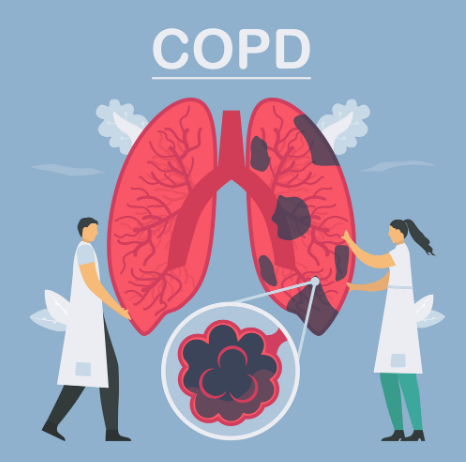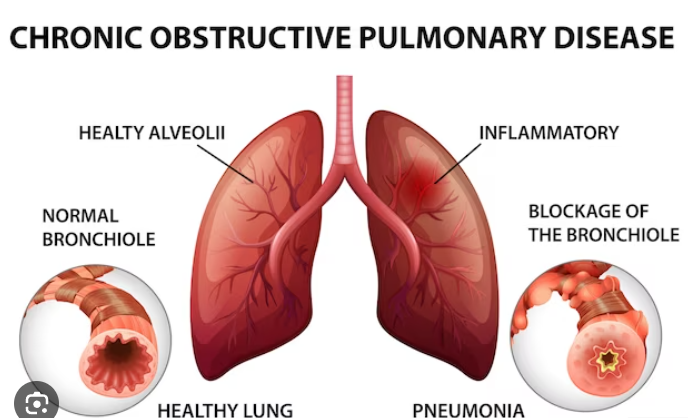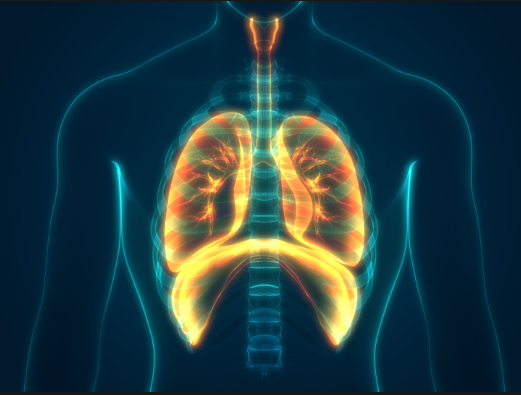Know the basics of symptoms, diagnosis, and treatment to help you battle the disease of COPD
Chronic obstructive pulmonary disease is referred to as COPD. Globally, this lung condition is one of the leading causes of disability. As the condition worsens, reduced airflow affects a person’s ability to breathe and function. According to the Centers for Disease Control and Prevention, COPD is the third-most common cause of death in the United States. Currently, COPD affects nearly 16 million Americans, and many more do not even know they have it. Smokers have a markedly increased risk of developing the common illness. Compared to men, women are somewhat more at risk.
Also read-Chronic Fatigue Syndrome : Who In The US Suffers From Chronic Fatigue Syndrome

Signs and symptoms of COPD
The main symptoms of COPD are mucus (phlegm) production and daily coughing. Dyspnea, or shortness of breath, worsens over time and makes it difficult to carry out daily tasks like walking. Usually, chronic inflammation and the slow degradation of airway tissue have been going on for years by the time symptoms become apparent. The following symptoms and indicators may be present:
- Sighing
- Tightness in the chest
- Clear, yellow, white, or green phlegm from a daily cough
- Bluish lips or fingernails due to a reduction in the blood’s oxygen-rich circulation
- Ankle, foot, or leg edema
- Recurring colds or other respiratory illnesses
- Weariness and a decrease in energy
- Inadvertent reduction of body mass

Risk factors
Smoking is the primary risk factor for COPD. Former cigarette smokers are at higher risk than people who never smoked. The longer someone has smoked and the more packs they smoke, the greater the risk. It’s possible that smoking marijuana, cigars, or pipes may increase the risk as well. Combinations of risk factors, like having asthma and smoking, may compound the risk of developing COPD.

Diagnosis
Determining whether you have COPD starts with a health history and a physical examination. Your health care provider will ask if you’re a current or former smoker. Other questions will address any family history of COPD and whether you’re regularly exposed to chemicals, secondhand smoke, polluted air, dust, or other environmental toxins. You’ll describe any coughing you experience and how much mucus comes up. During the physical exam, your doctor will use a stethoscope to listen for abnormal lung sounds, like wheezing.

Types
COPD is an umbrella term for emphysema, chronic bronchitis, and, in some cases, asthma symptoms. Emphysema and bronchitis act on the body in different ways, but both types of long-term lung disease result in similar symptoms. Emphysema damages the air sacs of the lung, or the alveoli. These air sacs provide oxygen to the body via the bloodstream. Emphysema gradually weakens the alveoli and makes the airways less elastic. People with emphysema struggle with constant shortness of breath.

Stages
COPD is classified into four stages, from A to D: mild, moderate, severe, and very severe. A patient’s stage includes the level of symptoms, like cough frequency and intensity; pulmonary function test results; and the number of bad episodes, or exacerbations, he or she had in the previous year.

Treatments
COPD currently has no known cure. Treatment, however, can benefit you in a variety of ways. The National Heart, Lung, and Blood Institute states that the objectives of treatment are to improve overall health, prevent and manage complications, improve your ability to remain active, relieve symptoms, and slow the progression of the disease. To create your treatment plan, a pulmonologist—a physician who specializes in lung conditions—may be referred to you.

Also read-Knee Pain : A Patient’s Guide To Knee Pain And Its Symptoms
images source: Google
Disclaimer: The opinions and suggestions expressed in this article are solely those of the individual analysts. These are not the opinions of HNN. For more, please consult with your doctor




































